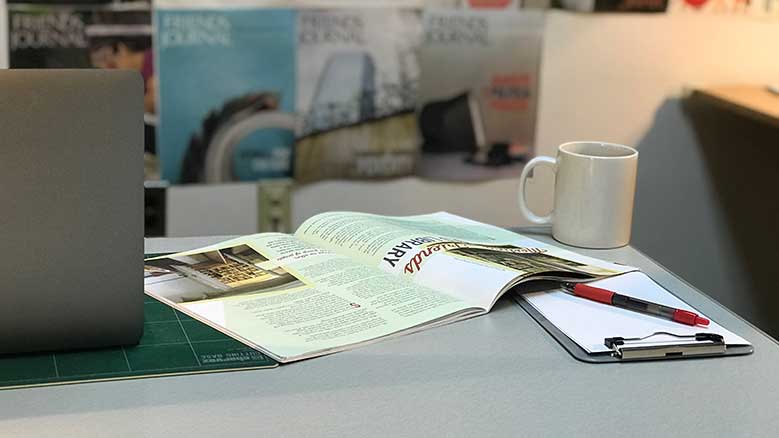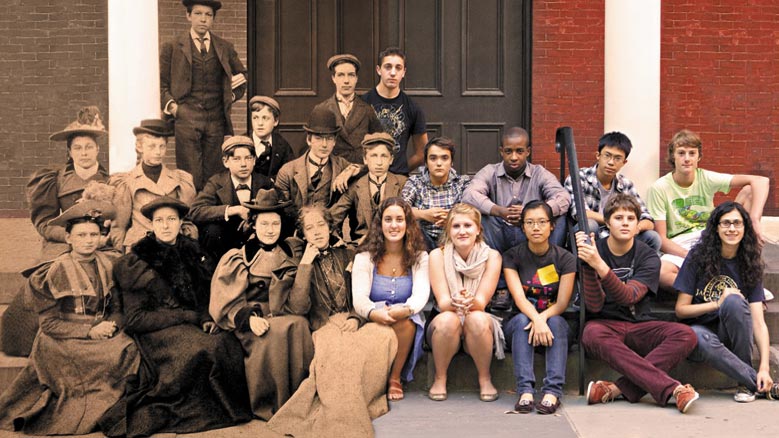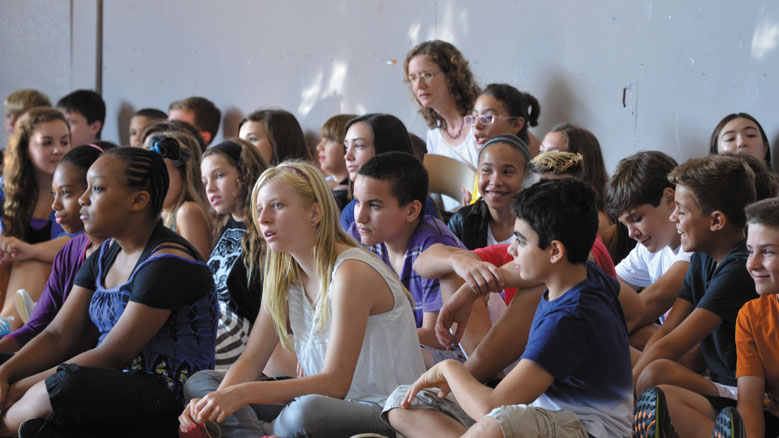
Fast Facts:
- Features run 1200-2500 words (General information)
- Submissions close January 13, 2020 (Ready? Submit here)
- Questions? Email martink@friendsjournal.org or message on Facebook or Twitter.
Quaker schools facing budget crises! Yearly meetings reorganizing! Quaker organizations shedding staff or pivoting to new causes!
This coming April, we’d like to take an informal inventory of our Quaker institutions. From the local to the international, what are the stresses and opportunities? Which ones need to be reinvigorated or re-imagined—or perhaps laid down? How is Quaker decision-making processes adapting to online tools and Internet culture? How are our volunteer-heavy committee structures fairing up to the added time and money stresses of modern family life? As Friends disperse more thinly geographically and as we become increasingly conscious of the magnitude of climate crisis, how do we knit together for support and inspiration?
I see various types of Quaker organizations and wonder where they’ll be in 10, 20, or 30 years. Do we have a vision of that future and a pathway to get us there?
- The Local. I ran into a dear Friend on the train a few months ago. In the course of catching up I asked him how his Quaker meeting was fairing. It’s a favorite meeting of mine and distance mostly keeps me away. He sighed deeply, paused, and said it would probably be dead in ten years’ time. I wanted to argue with his pessimism but remembered that the last few times I visited I was the youngest Friend in the room—a particularly worrisome observation now that I’m in the my early 50s. Many of the meetings in my area are facing similar demographics. Quaker generational shifts and closing meetinghouses are not a new phenomenon, but I suspect some parts of the United States are in for a new round. How do we consciously do this? Being a decentralized denomination, we’ve never been good at planning, but how do we keep a Quaker presence in an area that doesn’t have the critical mass for the current levels of a fully functioning Friends meeting?
- Quaker-related Orgs. And how are we relating to the Quaker-related organizations like Friends schools, colleges, and retirement communities? Some schools have started sending out emergency stay-open-or-close appeals. Quaker colleges are worried about enrollment numbers and finances. Many of these organizations aren’t formally under the care of a Quaker body anymore, yet they carry our name and values and are often the most visible Quaker institutions. We have strong connections with them. How do help them thrive?
- Yearly Meetings. And then the regional: There have been a number of full-on schisms in the past decade. What do they teach us about Quaker polity? About the fault lines of modern Quaker theology and culture? And freed of inherited structure, how have the newly cast-off Friends reinvented the concept of regional Quaker organizing? How should modern Quakers be organized and governed?
- National Organizations. The current model of national organizations (think acronyms like AFSC, FCNL, FUM, FGC) with large staffs is only about a hundred years old. Before that, the work of Quakers was powered by committees of volunteers. Over time ideas on “Quaker leadership” have shifted from clerks and ministers to the executive heads of these staffed organizations. Tensions with these models sometimes breaks out. How is that working? What about smaller Quaker groups with staffs in the single digits? How does their size and modern communication allow them to operate across geography with small staffs?
As always, these ideas are just suggestions. We’re happy to read whatever readers think about the current state and future of our Quaker institutions.
Submissions due January 13, 2020.




Comments on Friendsjournal.org may be used in the Forum of the print magazine and may be edited for length and clarity.